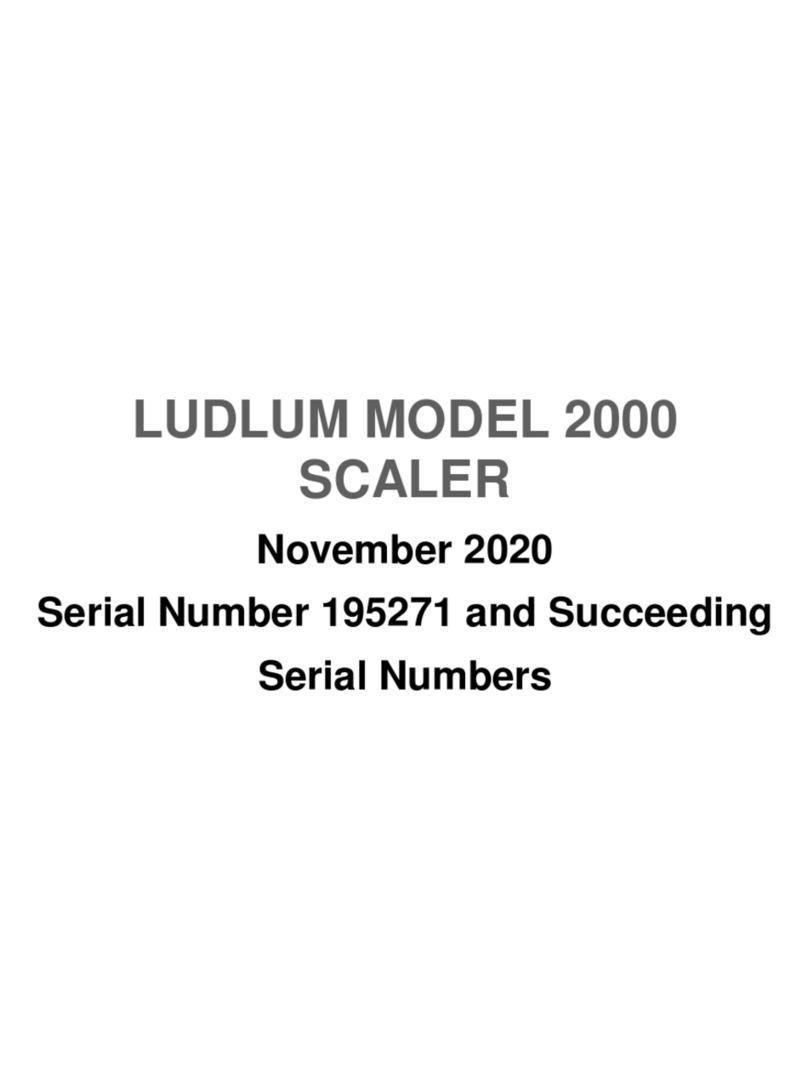
MODEL 2224-1 Technical Manual Section2
Ludlum Measurements, Inc. Page 2-3 January 2012
see if the batteries have been correctly installed. Replace the batteries if
necessary.
Operating the Instrument
Connect a detector to the instrument if you have not already done so.
Obtain a meter reading from a check source or calibrated source, if available.
Verify that the reading falls within the expected range. Remove the source.
If a radiation source is available, increase the meter count to exceed the
counting capability of the instrument, signified by the illumination of OL
LED and full-scale needle deflection.
Depress the RESET pushbutton. The meter needle should drive to zero, and
the alarm circuit should de-energize, shutting off the visual alarm.
Select the desire count channel display (α/α+β/β) and count cycle duration
(MIN) and proceed with use.
Principle of Operation
The Model 2224-1 is to be used in combination with alpha/beta scintillation
or proportional detectors. The instrument uses pulse heights discrimination
to distinguish between alpha and beta pulses from the radiation detector.
The detected alpha count is displayed by selecting the αposition on the
three-position α, α+ β, and βtoggle switch. The sum of the alpha and beta
counts are displayed in the α+ βposition, and beta counts are displayed in
the βposition. Multiply the CPM reading on the analog ratemeter by the
range multiplier position. When using the LCD and count cycle selector
switch (MIN), the counts are accumulated in each of the three channels
during the count cycle. The alpha, alpha + beta, and beta counts can be
displayed by selecting the appropriate α, α + β, β channel. The count cycle is
started by depressing the pushbutton switch located in the end of the
carrying handle.
The RESET pushbutton switch resets the meter pointer to zero. The detector
operating voltage is displayed on the meter dial, 0-2 kV (kilovolts), by
depressing the HV switch. The OL (overload) lamp, located in the lower
right-hand corner of the meter dial, is to indicate that the detector is
saturated either by a puncture in the detector face on a scintillation detector
or an exposure to a radiation field above the counting capability of the
instrument. The analog meter will deflect full-scale when the OL lamp is
illuminated.




























